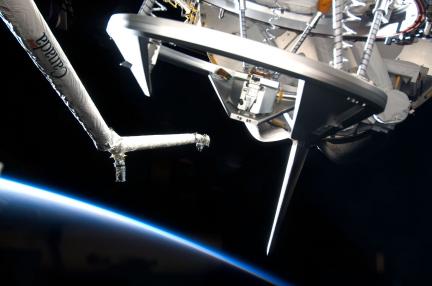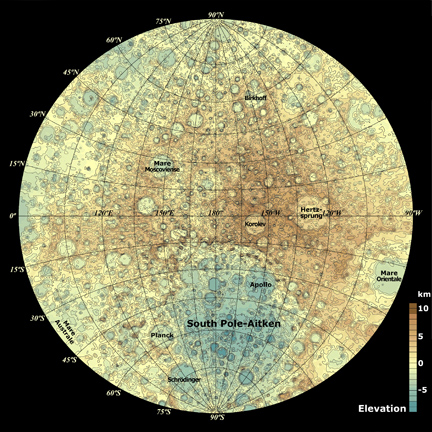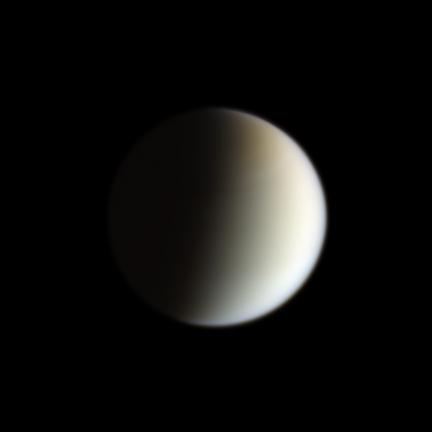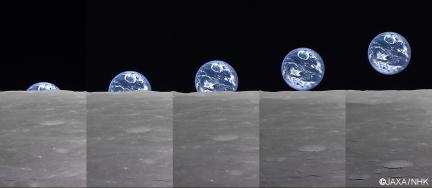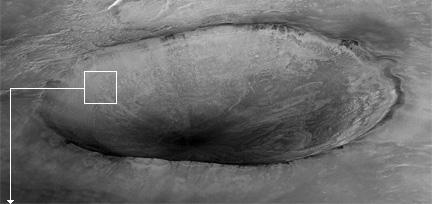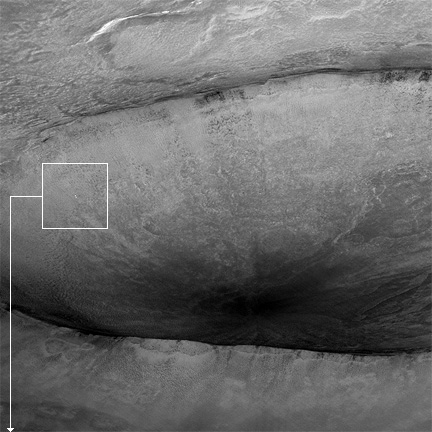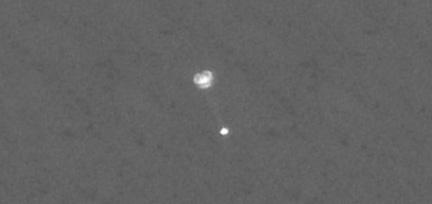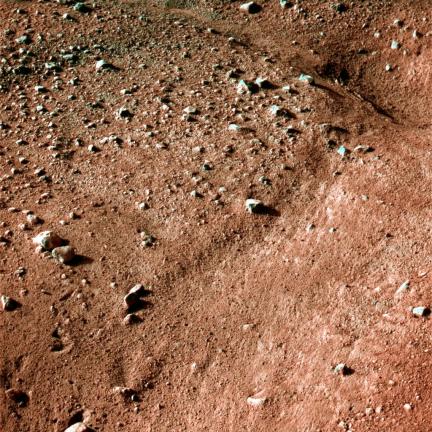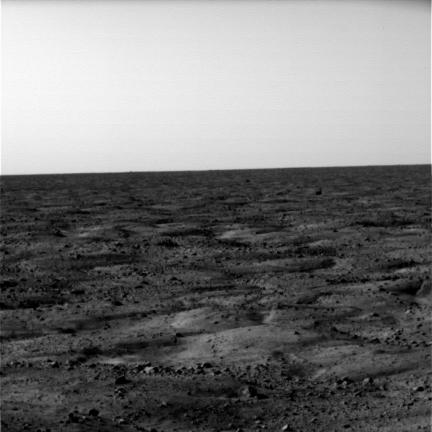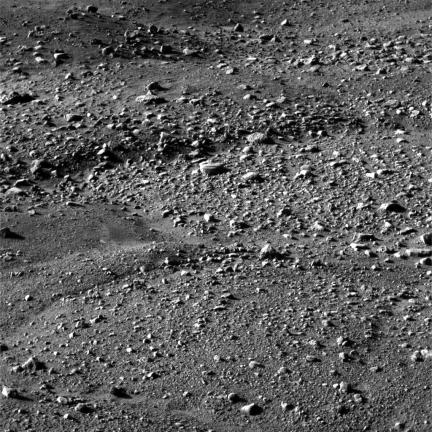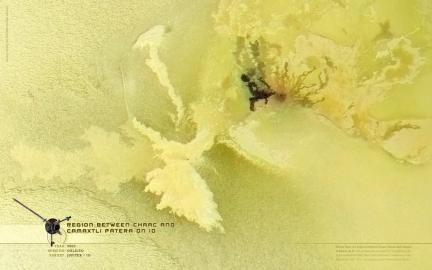Lunar Elevation Map from Kaguya Data
Click either image below to load the 4MB high-res tiff file from JAXA. Your will need to be able to read tiff files to view in the browser or click here to download and save the file (right click on the link and choose “save file”).
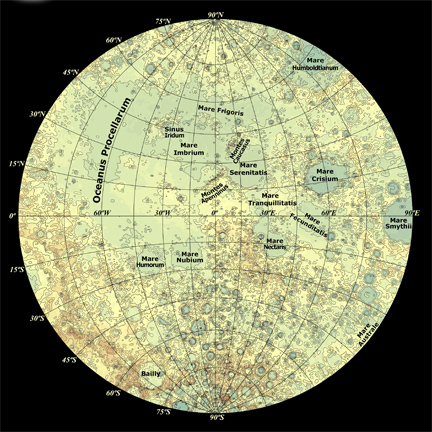
Near Side
Far (unseen) Side
Titan Flyby 44
Moons of Jupiter on Your Desk
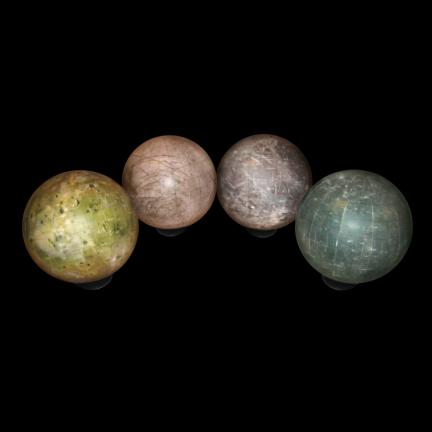 Download this pdf to check out these soon to be produced desktop globes of Jupiter’s moons and contact them about any interest in buying them here. These are cardboard-substrate globes on simple plastic bases, but they still look pretty cool. Even at the high price of $300 (a pre-production estimate) – I have to say that I am pretty tempted.
Download this pdf to check out these soon to be produced desktop globes of Jupiter’s moons and contact them about any interest in buying them here. These are cardboard-substrate globes on simple plastic bases, but they still look pretty cool. Even at the high price of $300 (a pre-production estimate) – I have to say that I am pretty tempted.
Pssst… Look Under Your Feet
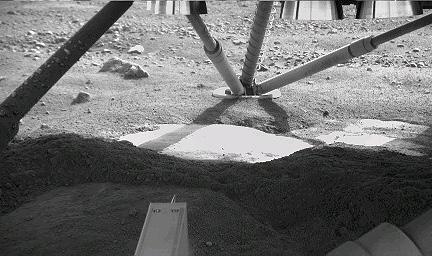 The Mars Phoenix Lander was sent on its long mission to Mars for really one purpose: to find ice. The region selected was seen as one of the more likely places on Mars to have an ice table that is closer to the surface and hopefully available to its robotic arm deployed just a few days ago.
The Mars Phoenix Lander was sent on its long mission to Mars for really one purpose: to find ice. The region selected was seen as one of the more likely places on Mars to have an ice table that is closer to the surface and hopefully available to its robotic arm deployed just a few days ago.
The above image was taken yesterday by that robotic arm and lead scientists suspect that the bright patch visible in the image is the very ice they have been looking for. It would seem that when Phoenix’s thrusters were fired to slow the lander down for a soft touch-down – that all the dust and soil below it was blown away to reveal a smooth and highly reflective surface.
It is not yet official… but this could mean mission accomplished for Phoenix.
Express Way to Venus
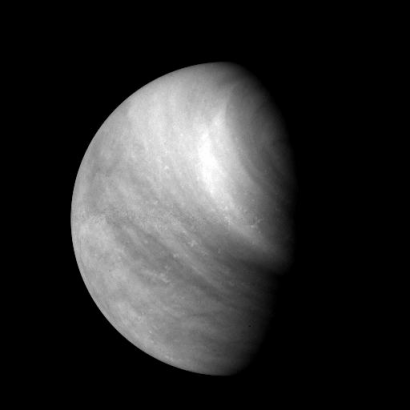 Too few images come from the Venus Express mission. Probably has something to do with its featurelessness. The only way to see this level of detail in the Venusian clouds is by using alternative flase-color imaging. These frames were taken in ultraviolet light.
Too few images come from the Venus Express mission. Probably has something to do with its featurelessness. The only way to see this level of detail in the Venusian clouds is by using alternative flase-color imaging. These frames were taken in ultraviolet light.
One More Earthrise
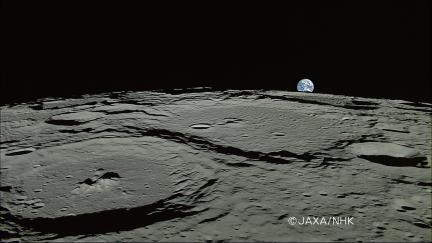 Also from JAXA.
Also from JAXA.
Prometheus Spreads its Magic!
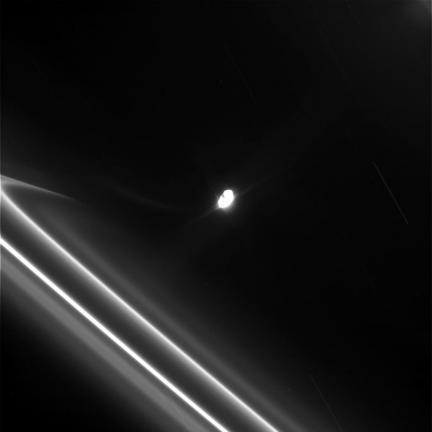 From the raw images of the Cassini mission. This is Saturn’s tiny moon Prometheus causing a disturbance in some ring particles. Nothing really new to be said here as we have seen this featured in a few animations posted here before. This is just a nice image of that phenomenon with the addition of a nice glaringly over-exposed Prometheus.
From the raw images of the Cassini mission. This is Saturn’s tiny moon Prometheus causing a disturbance in some ring particles. Nothing really new to be said here as we have seen this featured in a few animations posted here before. This is just a nice image of that phenomenon with the addition of a nice glaringly over-exposed Prometheus.
Its Just Pretty: Earthrise as Seen by Kaguya
Phoenix Landing Site as Seen by Mars Recon
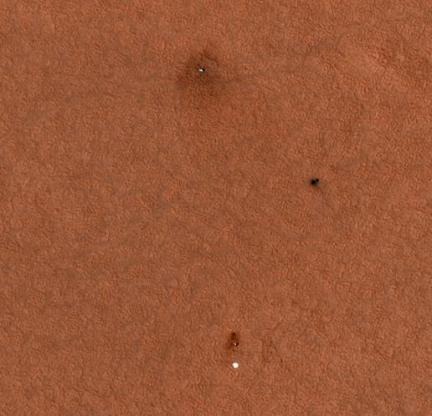 So much for descent images… here is Phoenix in its resting place also taken by Mars Recon. Seen here is the lander on top, the heat shield (with a bounce mark) and the parachute below (which appears to have fallen nicely elongated).
So much for descent images… here is Phoenix in its resting place also taken by Mars Recon. Seen here is the lander on top, the heat shield (with a bounce mark) and the parachute below (which appears to have fallen nicely elongated).
The Phoenix Landing Image in Context
Near True Color From Phoenix
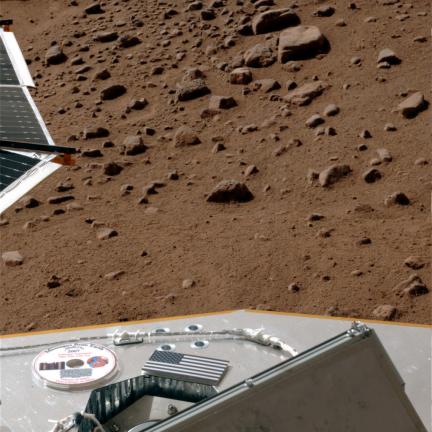 Near “true” color made by Gordan Ugarkovic using the only RED, GREEN and BLUE filtered images returned from the mission thus far. Additional adjustments were made by looking at the logo and the American flag (which we have an idea of what those color are supposed to look like) and adjusting the color of those items to appear as what we know are “true colors”. Logic then dictates that if those items are correctly balanced, then the Martian soil will also appear close to accurate.
Near “true” color made by Gordan Ugarkovic using the only RED, GREEN and BLUE filtered images returned from the mission thus far. Additional adjustments were made by looking at the logo and the American flag (which we have an idea of what those color are supposed to look like) and adjusting the color of those items to appear as what we know are “true colors”. Logic then dictates that if those items are correctly balanced, then the Martian soil will also appear close to accurate.
Phoenix Landing as Seen by Mars Recon
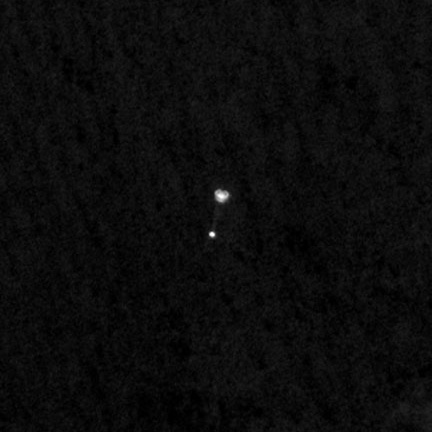 This image represents the very first time we have been able to acquire a visual on any kind of probe landing on the surface of another moon/planet. What is (clearly) seen here is the Mars Phoenix lander in the parachute phase of its descent. You can even make out the shape of the thin threads that hold Phoenix tethered to its chute.
This image represents the very first time we have been able to acquire a visual on any kind of probe landing on the surface of another moon/planet. What is (clearly) seen here is the Mars Phoenix lander in the parachute phase of its descent. You can even make out the shape of the thin threads that hold Phoenix tethered to its chute.
Normally a visit to another world is a solitary experience, but as many as 3 other probes already in orbit around Mars (Mars Reconnaissance, Mars Express and Mars Odyssey) were timed out to be in the general overhead vicinity of the Phoenix landing. It just so happens that one of them, Mars Recon, has very sharp eyes.
False Color From Phoenix
First Images From Phoenix
This mission is not likely to be very exciting in the imaging. So far most of what has been returned looks more like the more ordinary images returned by the Mars Rovers. The real excitement of this mission is drilling for the water ice. The first images are look a whole lot like an old moon mission from the early sixties:
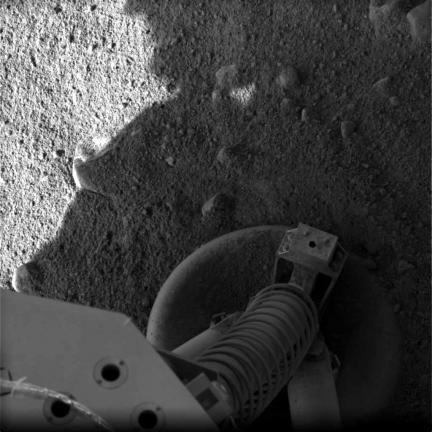
The horizon from Phoenix. You can now see the features that made up the cantaloupe-like texture of the images of this region from orbit.
Phoenix is on Martian Ground
Area Where Phoenix is Expected to Land
 See also.
See also.
Phoenix Lands in 3 Days
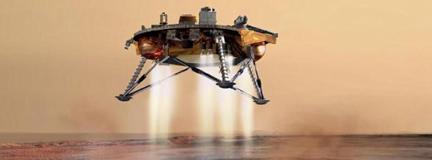 Official website is here and the official blog.
Official website is here and the official blog.
Volcanic Io Wallpapers
Oh My… What Did Earth Do Now?
 I don’t usually post terrestrial images of Earth… but this forces an exception.
I don’t usually post terrestrial images of Earth… but this forces an exception.
